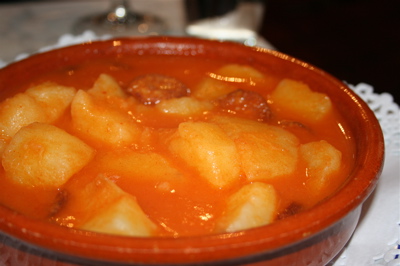
Barnsley House, near Cirencester, in the Cotswolds
Jon and I had to turn in our passports this month to change our visa status (just in case either of us gets fired, we don’t want to be deported), so for all of March, we couldn’t leave the country. As consolation for not being able to travel (and taking advantage of the recent good fortune of sunny weekends), we decided it was high time to visit the Cotswolds. Sure we’ve been to Bath a few times, but a true Cotswolds getaway seems to involve an old country pile somewhere. And that’s where the Barnsley House comes in.
Generally when Jon and I travel on holiday, we don’t stay in luxe accommodations, figuring it’s a waste of money because we’re out and about so much. But when Jon mentioned Barnsley House’s fabulous spa facilities, tasty-sounding restaurant, and a current promotion of weekend rooms at £362 a night (including breakfast and dinner for the two-night minimum stay), I didn’t need to be asked twice.
We arrived on Friday night, after a 1.5-hour train ride from Paddington, followed by a 20-minute taxi ride from Kemble station.

house champers and truffles upon arrival
Upon arrival, a receptionist immediately walked us up to our room, showed Jon how all the Bose and Bang & Olufson equipment worked while I filled out credit card details on a simple form, and then left us to relax over a free bottle of house champers. We could’ve been arriving at a friend’s house, rather than checking into a hotel. A strong start.
Part of the reason we decided to spend the weekend at Barnsley House instead of at nearby competitor Cowley Manor is because we’d read excellent things about the food. So after loafing around in our enormous room and oohing and ahhing like hicks over our stupendous bathroom, we walked downstairs for dinner.

roasted pork loin with honeyed prawn
Dinner at the Barnsley House is prix fixe only. 3 courses for £42.50 or 4 for £49.50. There’s lots to choose from, and having eaten in the resto both nights of our stay, I was interested in how the kitchen managed to evolve the menu from one day to the next. What was pork loin one day was pork belly and crackling the next. I’d like to imagine that over the next few days, you’d see pork shoulder, pork head, pork trotter . . . .
Much of the veg on the menu is grown in the house gardens, and all the meat comes from local producers.
Did you know Liz Hurley raises pigs? I didn’t. It does seem a bit ironic, don’t you think? But her country getaway lies just behind the Barnsley House, and how could I resist the “organic Hurley loin of pork with red onions and honeyed tiger prawns”? It was good meat – juicy and rich, with a crisp, delicate, salty crackling. A thing of beauty. The tiger prawn was besides the point (and by the way, there was only one prawn, so why the menu said “tiger prawns” is beyond me).
Jon tried out the signature vincisgrassi, which the menu described as “baked pasta with Parma ham, porcini and truffles.” It was tasty, but to our perhaps-slightly-unappreciative eye, it looked and tasted like lasagna. A really creamy, good lasagna, but still, lasagna.

a view of the garden from the restaurant
While the food is pretty ambitious and well-executed, it’s not destination dining, and the food shares the spotlight with the dining room, which overlooks the House’s famous Rosemary Verey gardens. The room looked its best in the morning, when the sun brightened and warmed the generously-spaced tables. (You really can pretend like you have full run of the place – the Barnsley House is about the luxury of privacy and space).

pot roast chicken drumstick with parma ham at the Village Pub (£16)
For a change of scenery, we walked 100 yards down the street from Barnsley House for lunch at the Village Pub, which is also owned and operated by the Barnsley House. While we did recognize a few other Barnsley House guests there at lunchtime, the place seemed to be popular with locals, too. The food, though, was hit-or-miss, and Jon’s mediocre £16 chicken drumstick was pretty ridiculous. Service was also an issue – we waited over half an hour for our starters, which were a curried parsnip soup and a potted pork. Not exactly stuff that needed intensive effort before serving. It was hard to believe the Village Pub and the Barnsley House were related at all.
Overall, we had a delicious, relaxing weekend at the Barnsley House. It’s one of those places where all the components (service, decor, food, spa facilities), each taken alone, are at a high level, and combined, are unforgettable. We saw our final tab double the promotion price once we factored in wines at dinner, lunches, and (really wonderful) spa treatments. Incredibly enough, though, I thought our weekend was worth every penny.
As stated above, Jon and I took advantage of a promotion for rooms at £362 a night (including breakfast and dinner for the two-night minimum stay). However, on the Barnsley House website, it says if you stay on a weeknight, the price is reduced to £185 a night. Worth taking a day off from work, I tell you.
Barnsley House, Barnsley, Circencester, Gloucestershire GL7 5EE; 01285 740000; closest rail station: Kemble (from London Paddington), followed by a 20-minute, £20 taxi ride.
The Village Pub, Barnsley, Circencester, Gloucestershire GL7 5EF; 01285 740421.























 Castilian garlic soup at Restaurant Jose Maria
Castilian garlic soup at Restaurant Jose Maria 







